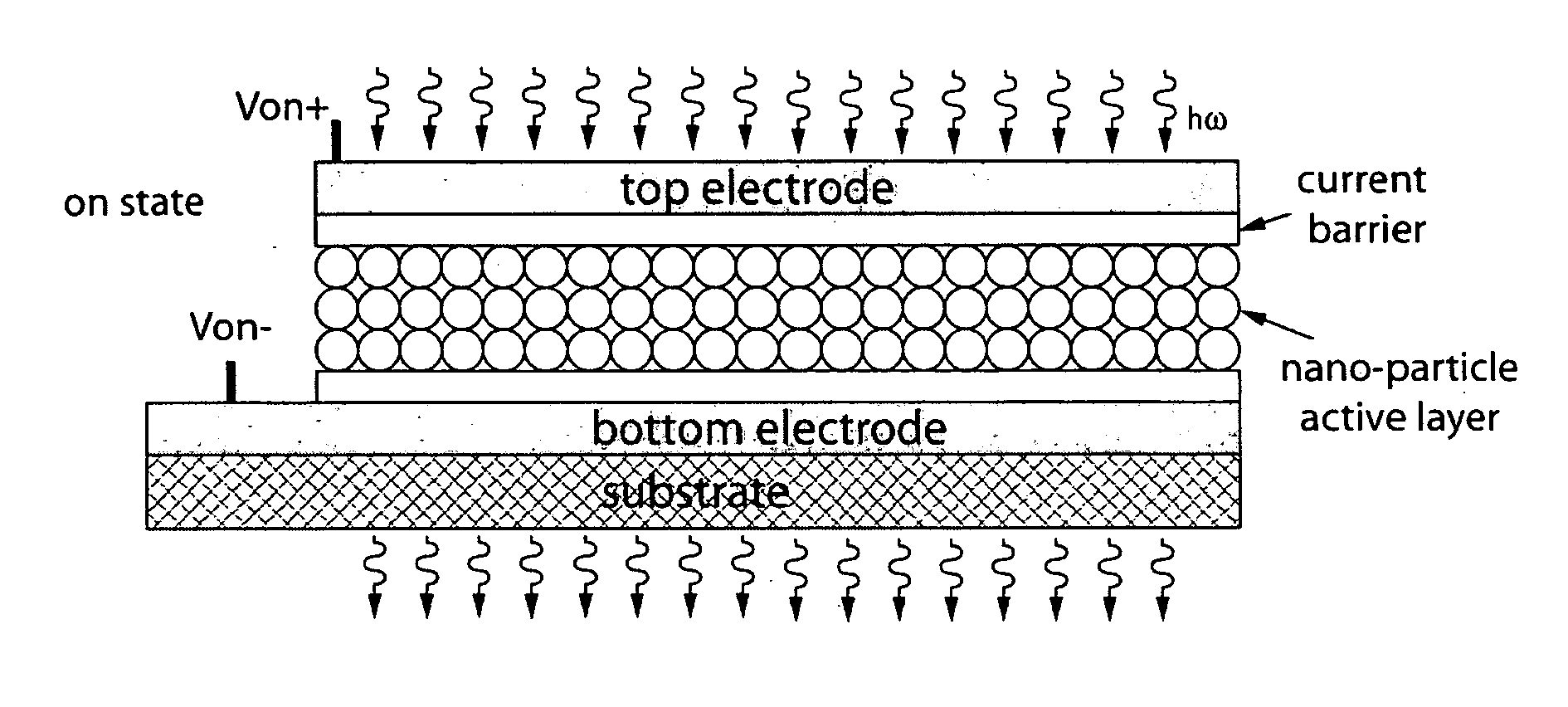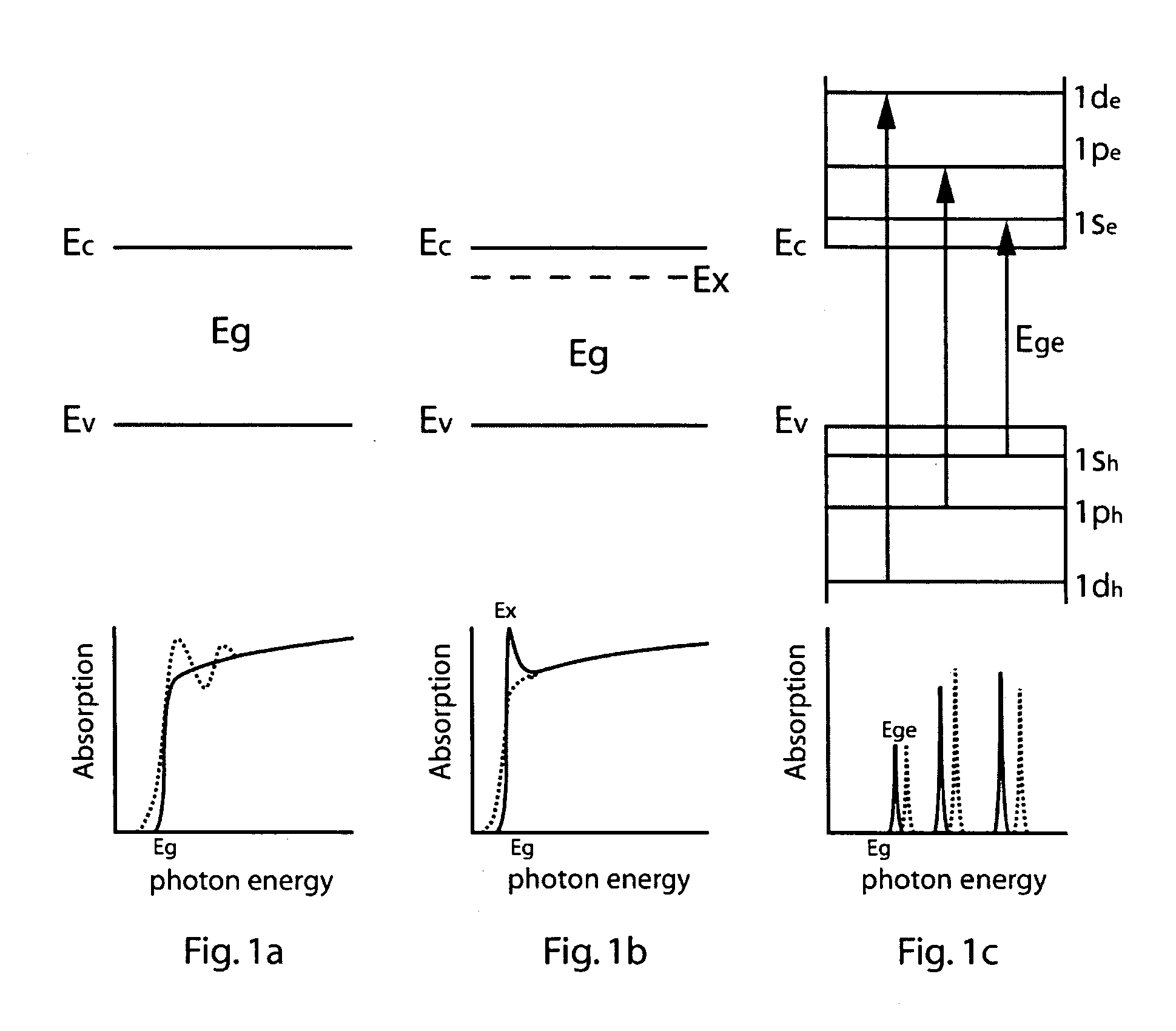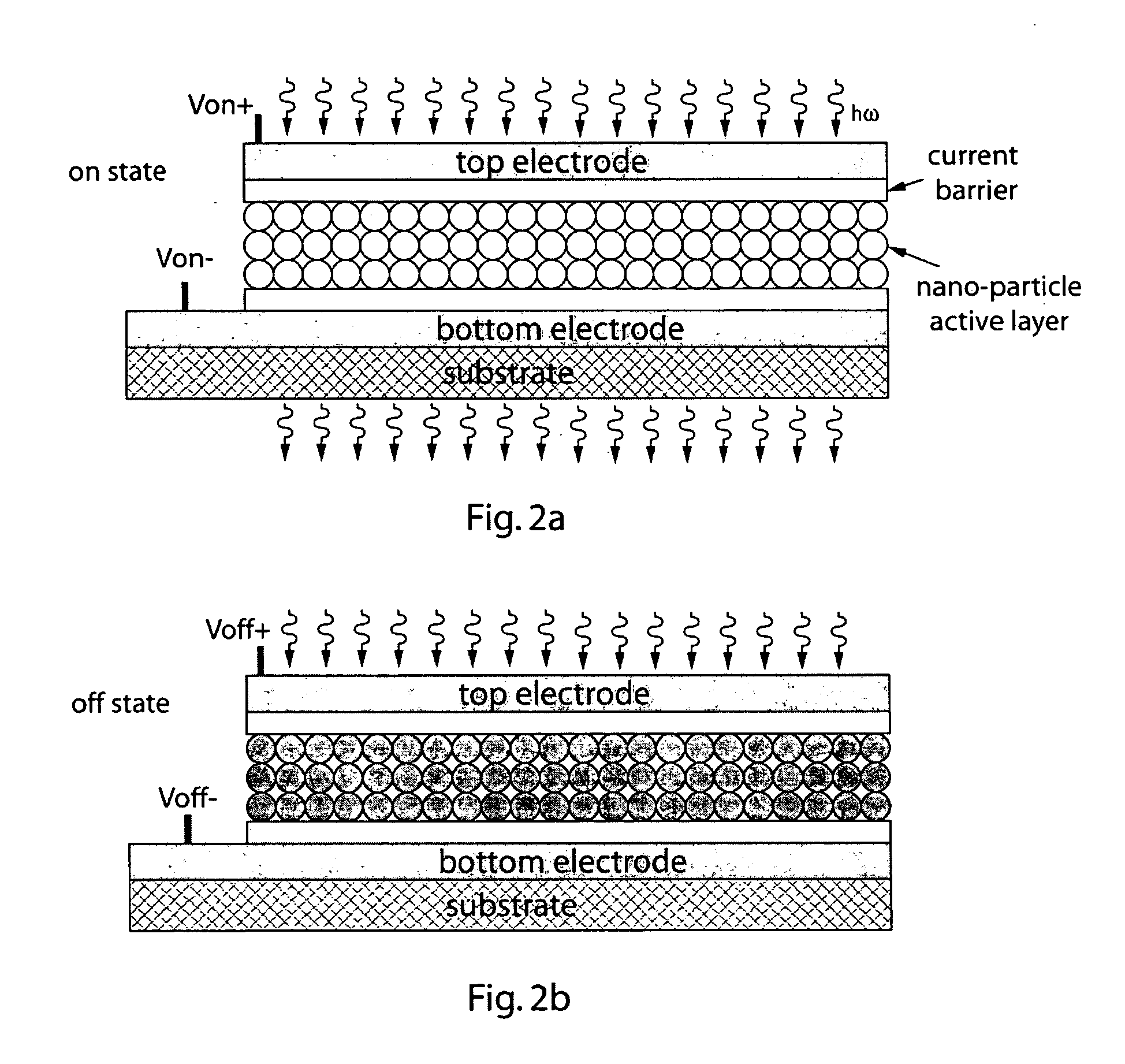Programmable photolithographic mask based on semiconductor nano-particle optical modulators
a technology of optical modulators and programmable masks, applied in the field of photolithography, can solve the problems of changing material systems, requiring a lot of effort and investment in growth, and complex processes
- Summary
- Abstract
- Description
- Claims
- Application Information
AI Technical Summary
Benefits of technology
Problems solved by technology
Method used
Image
Examples
Embodiment Construction
[0059] The first exemplary embodiment of a nano-particle optical modulator is demonstrated in FIG. 2. An ensemble of nano-particles is sandwiched between two electrode-bearing substrates. The insulator supplies a current barrier. If the nano-particle ensemble itself is resistive enough to maintain a high electrical field then this barrier is not necessary. If the modulation is operated by current, the thickness of the current barrier has to be duly adjusted. The geometry is transmissive, so the optical path through the modulator needs to be relatively transparent. In the example shown, the substrate, electrodes, and insulators are transparent. One could consider manufacturing a window through an opaque region to provide an optical path through the device. A voltage is applied between the two electrodes to switch the modulator between on and off states. For light at the working wavelength, at on state the device is highly transparent while at off state the device is almost opaque. (N...
PUM
| Property | Measurement | Unit |
|---|---|---|
| diameters | aaaaa | aaaaa |
| diameters | aaaaa | aaaaa |
| sizes | aaaaa | aaaaa |
Abstract
Description
Claims
Application Information
 Login to View More
Login to View More - R&D
- Intellectual Property
- Life Sciences
- Materials
- Tech Scout
- Unparalleled Data Quality
- Higher Quality Content
- 60% Fewer Hallucinations
Browse by: Latest US Patents, China's latest patents, Technical Efficacy Thesaurus, Application Domain, Technology Topic, Popular Technical Reports.
© 2025 PatSnap. All rights reserved.Legal|Privacy policy|Modern Slavery Act Transparency Statement|Sitemap|About US| Contact US: help@patsnap.com



